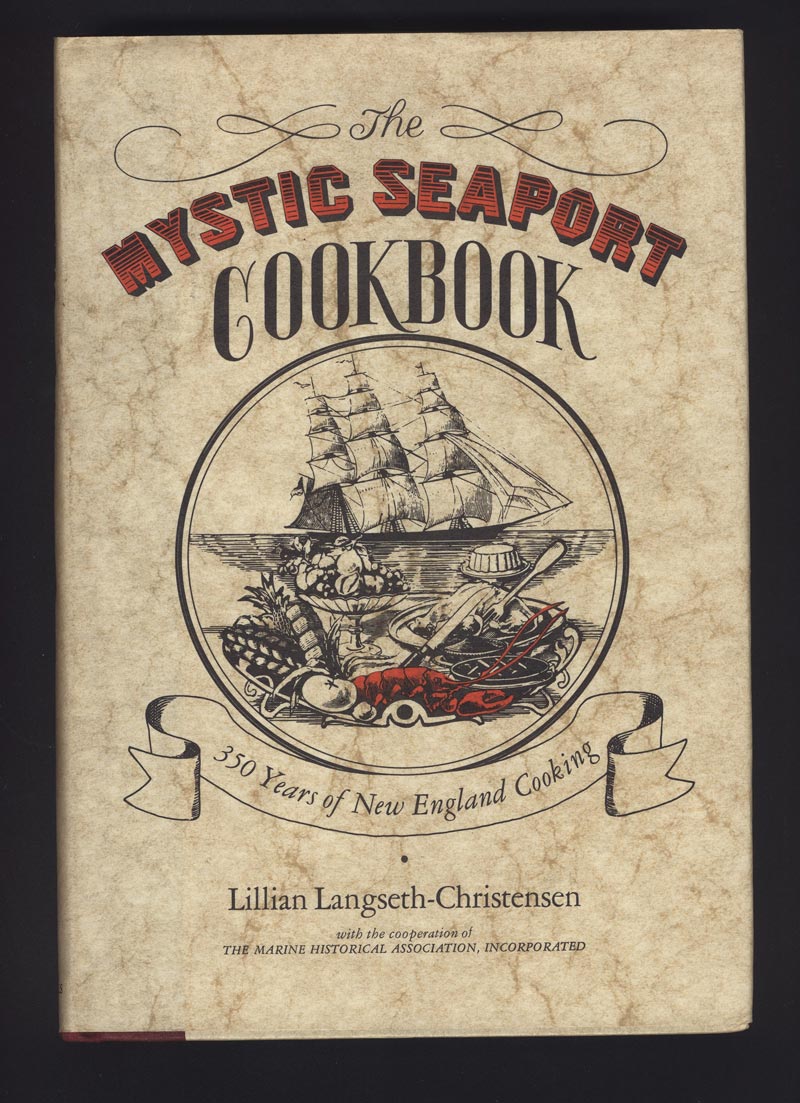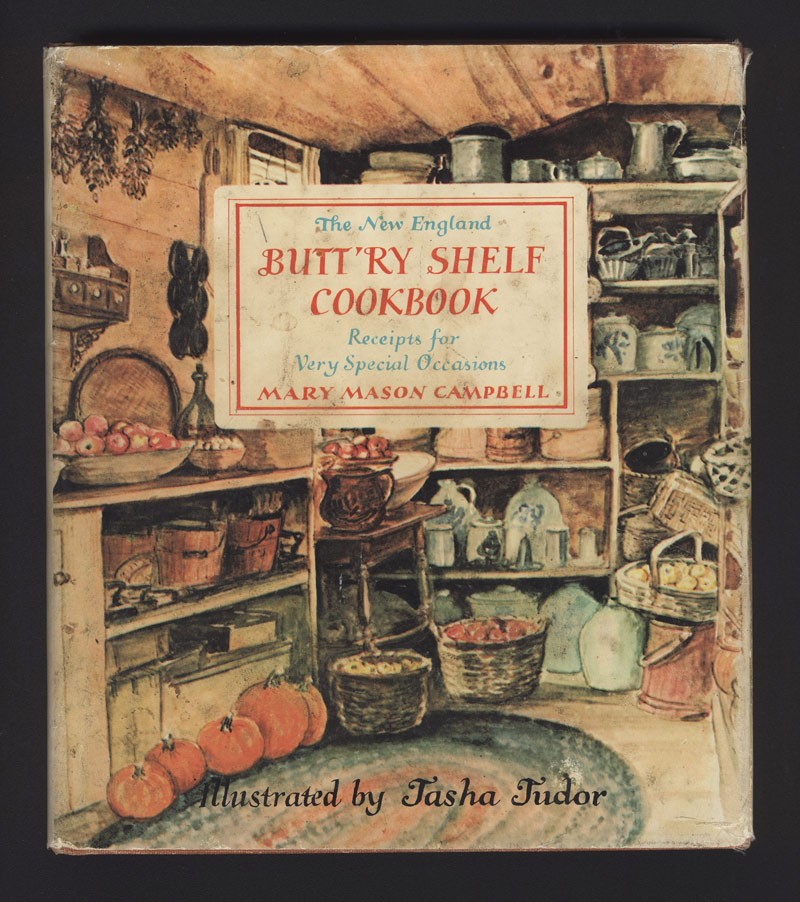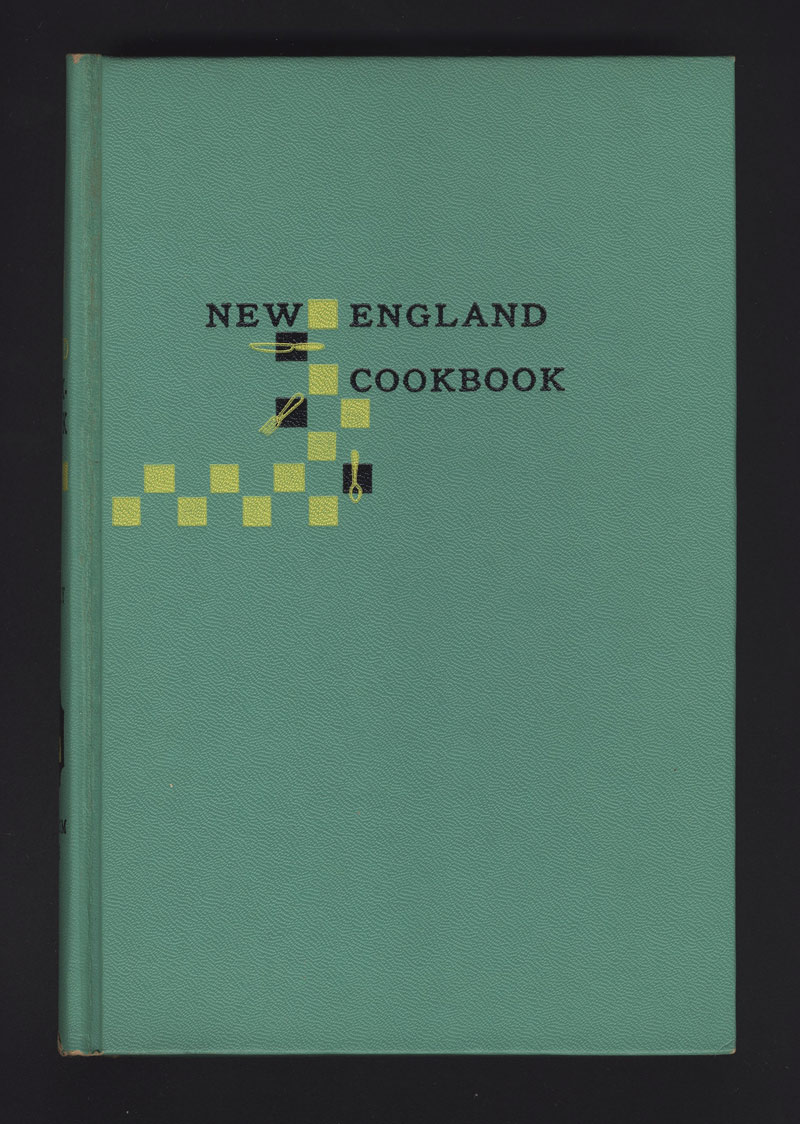Another post in a series from the cataloger of the Anne M. Cranston cookbook collection, which consists of approximately 4,400 British and American cookbooks from the 19th and 20th centuries. In this series, Shelley shares fascinating recipes, quotes, kitchen solutions, and anecdotes she has uncovered in the collection.

Lillian Langseth-Christensen. The Mystic Seaport Cookbook: 350 Years of New England Cooking. New York: Funk & Wagnalls, 1970.
Food is central to the human experience, and discovering how people prepared and served food is a unique and intimate glimpse into daily life. I wish I could find the time to try a fraction of the recipes I come across; experiencing the food people ate is, in a small way, to remember them. These days, I find myself still immersed in New England cookery trying to find the most iconic recipes in their original and traditional forms. When I think New England, Boston baked beans immediately come to mind. This recipe is from Eleanor Early’s New England Cookbook. Serve steaming hot with brown bread.
Boston Baked Beans
1 qt. dried pea beans [navy beans]
1 medium-sized onion, peeled
½ lb. salt pork
½ cup brown sugar, firmly packed
1/3 cup molasses
1 tbsp. salt
1 tsp. dry mustard
1. On Friday night put the beans to soak in a kettle full of cold water. In the morning pour the water off, cover with fresh water and bring slowly to a boil. Simmer until you can blow the skins off.
2. When the skins blow off (it will take an hour or more), drain the beans and place about 1 cup in bean pot. Add onion. Add remaining beans until the pot is almost filled.
3. Score the salt pork to the rind and force down among the beans until it just shows at the top of the pot. Combine remaining ingredients and mix with the beans. Add enough hot water to fill pot. The pork should protrude a little above the water line so that it can brown nicely.
4. Bake in 300° oven for at least 8 hours. Add more water if necessary during baking time.
Chowders are simple, but when a good recipe is executed correctly, chowders can make incredible meals. I still remember the incredible taste of a New England clam chowder I had at Durgan Park near Faneuil Hall in Boston in 1985. This chowder is from the Crystal Lake Cook Book.
Fish Chowder
Cut into small pieces 3 or 4 pounds of fresh fish. Place in bottom of dinner pot 5 or 6 slices of salt pork and fry brown. Add and fry brown 3 thinly sliced onions. Remove kettle from fire and place on the onions and pork a layer of fish, a layer of potatoes, and sprinkle with a little salt and pepper. Add another layer of potatoes and fish until all the fish is used. Cover with water and after boiling half an hour pour in 6 finely powdered crackers. Add 1 pint or 1 quart of milk. Let scald and serve.
One of the oldest New England desserts is Indian pudding. It is an adaptation of an older English recipe using ingredients that New Englanders had in copious supply. Serve with plain or whipped cream.
Indian Pudding
3 tbs. yellow corn meal
1/3 cup dark molasses
3 cups milk, scalded
½ cup sugar
1 egg, beaten
1 tbs. butter
¼ tsp. salt
½ tsp. ginger
½ tsp. cinnamon
1 cup cold milk
1. Stir corn meal and molasses into scalded milk and cook over low heat until it thickens, stirring constantly.
2. Remove from heat and add sugar, egg, butter, salt, and spices.
3. Pour into buttered baking dish and bake in 300° oven for 30 minutes. Add cold milk. Do not stir. Continue baking at 300° for 2 hours.
Being so close to Saint Patrick’s Day, I wanted to add a word or two about New England boiled dinner. It may not be true Irish, but it has always been a staple with my family—especially at this time of year when corned beef brisket goes on sale. Every cookbook I have seen has basically the same recipe: Place meat in crock or stew pot, cover with water and simmer until tender and falling apart. When the meat is almost done, add potatoes, onions, carrots, and finally cabbage (turnips or parsnip optional). Any leftovers can be used to make hash the next morning—unless of course you live at my house. There is no leftover corned beef at my house.
While I absolutely love corned beef, I can see how one could tire of a steady diet of the stuff as related by an anecdote from Nantucket and Other New England Cooking:
“In early Nantucket days salted beef, called “Salt Horse,” was served twice a week as was boiled salt pork. Whalemen used to say they varied their diet by Having Salt Horse and hardtack* one meal and hardtack and Salt Horse the next and so on.”
*For the uninitiated, hardtack is a biscuit or cracker make from flour, water, and sometimes salt. It was a standard ration for soldiers, sailors, and 49ers. If kept dry, it would keep intact and somewhat edible for years.

Mary Mason Campbell. The New England Butt'ry Shelf Cookbook: Receipts for Very Special Occasions. Fifth printing. New York: World Publishing, Times Mirror, 1973.
I cited the following books in this post:
Eleanor Early. New England Cookbook. New York: Random House, 1954.
Crystal Lake Cook Book. Barton, Vt.: Published by the Woman's Literary Club of Barton, Vt., for the benefit of the library and reading room, 1902.
Nancy Hawkins, Arthur Hawkins, and Mary Allen Havemeyer. Nantucket and Other New England Cooking. New York: Hastings House, Publishers, 1976.
Shelley Kresan is a rare book cataloger in The Huntington’s technical services department.

